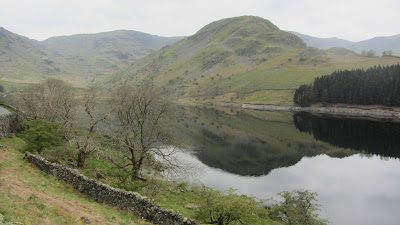Earlier this year I had my first experience of driving in America. We were lent a black Kia, and I became a Dallas Cowboys supporter for the week.
I was glad to be picked up from the airport, and see how Americans drive on the interstate. They have a relaxed attitude to lanes, overtaking on the inside rather than getting wound up at people staying in an outside or middle lane. Quite a good idea, really.
Apart from one trip to watch a baseball game in Milwaukee, all my driving was in Kenosha and Pleasant Prairie. I am sure Chicago and downtown Milwaukee would have been a bit different, but the experience was quite relaxed.
The roads are generally straight, and quite wide, and there is very little on street parking, and plenty of parking by the shops. The speed limits are relatively slow, 45, 35 and 25mph, and the car was automatic with air conditioning, and we were on holiday.
Of course driving on the right was different, and a couple of occasions I would have caused an accident, but for a sharp cry from Ann in the passenger seat or good reactions the other driver. There was also a slight sense of unease, on turning left on a wider road, as if there might be traffic on the other side of the road coming from behind rather than in front.
I found it difficult to get used to the four way stop. These also served to make the driving feel relaxed, because when you get to one of these you slow right down and stop, even when you can see there is no other car there. If there is another car already there, you give way to them.
It is so different to almost every junction here in the UK where one road is the major road with right of way, and the other is the minor road and gives way. I arrived at one four way stop from what felt a very minor road, when a truck was coming from left to right - all my instincts were to stay still until he had passed, but it did not happen -- he started to slow down, and I needed to move off so as to not delay him more than necessary. It did feel weird.
There is not a great deal of difference between the look of a stop sign at a minor road, and a four way stop, which got me beeped at on one occasion. After stopping at what I thought was a four way stop I started to go expecting the car yet to arrive at the stop would do the same. Well he did, and beeped at me, because he had the right of way.
Finding you way around Kenosha is very easy. All the Avenues run North South, and are numbered from the shoreline out to the west, and all the streets run East West, and are numbered from number 1 in the north to 128 on the border with Illinois. If you are heading for 7426 27th Avenue, you know to find it between 74th and 75 street. It was basically very easy.
There are some complications. One is that the major roads are also known by their state numbers, so that 104th street is also route 165, and 7th street is also route 50. Another is that you cannot just turn up any street or avenue and expect to get where you want, as some are discontinuous. You get to learn which streets (80th 85th 104th) and which Avenues (22nd 39th) will get you through rather than deliver you to a dead end. Choosing a road with traffic lights at the junction is a good clue. Then some roads run at angles to the grid system, or take different numbers as they weave around. Sheridan Road, also route 32, is 13th Ave in toward the south and 9th Avenue near the town centre. Even with the complications, we managed to get almost everywhere without the need of a map.
Back in the UK I looked at the Google map of Racine, the neighbouring town to the north. It was most confusing! Most of the roads had names instead of numbers, Avenues ran East West as well as North South, and so did the streets. I am glad we were not so adventurous as to look there, I have no idea how they manage.
So, on to the final story, which was second to last night. I was grateful to our hosts, who had lent the car for driving us home at the end of the festivities on the Saturday. On the Friday night I drove home, starting with dropping one family member off elsewhere. The first leg of the journey was fine, but shortly after restarting there were flashing lights from a police car behind, so I came to a stop, and the police stopped some distance behind.
I do not often get stopped in this or any other country, and did not see any problem with getting out and making my way to them to see what the problem was. They were quick and forceful in making sure I understood I was to get back in the car. It was not a pleasant experience. It turned out I had forgotten to turn the lights back on after the stop, so after a lot of questions, when he eventually let us go on, I was glad to be making my way with lights on the rest of the journey.
























